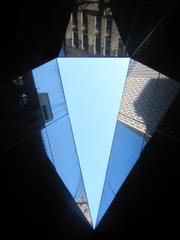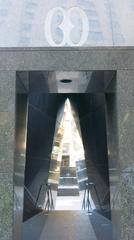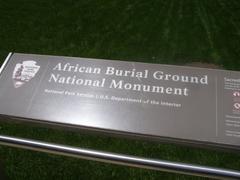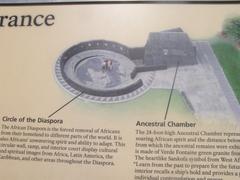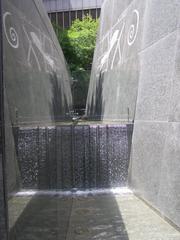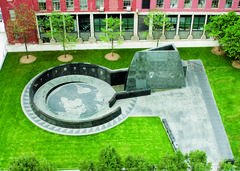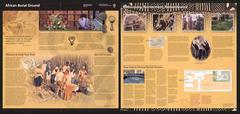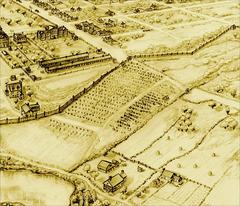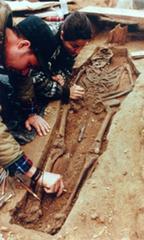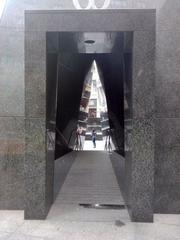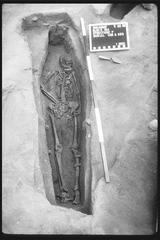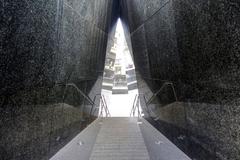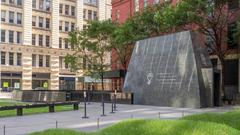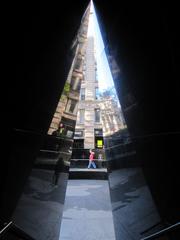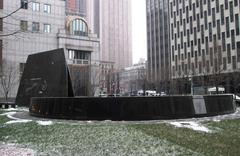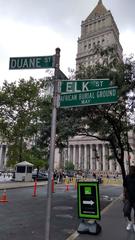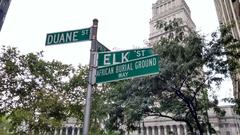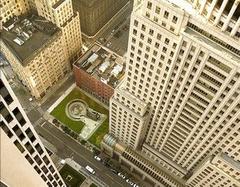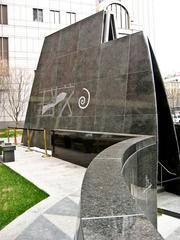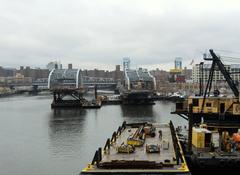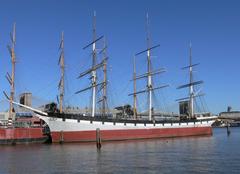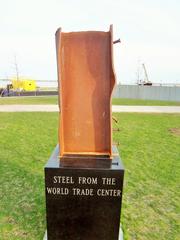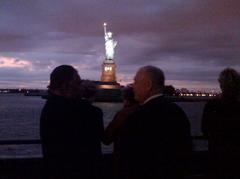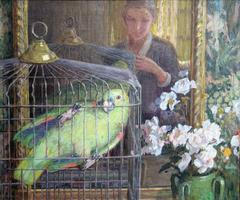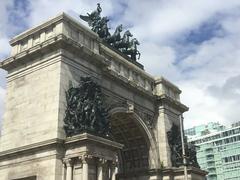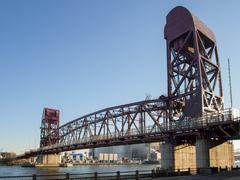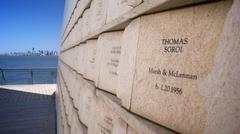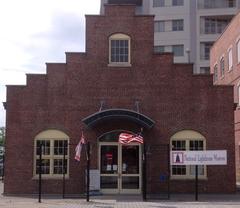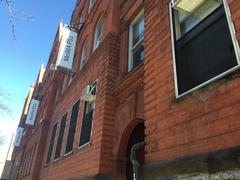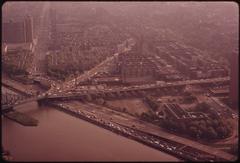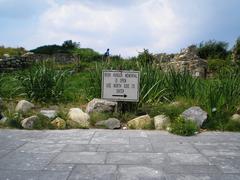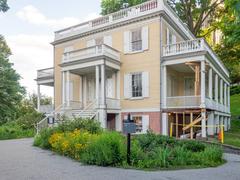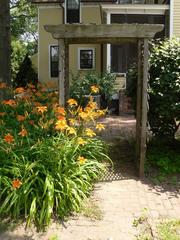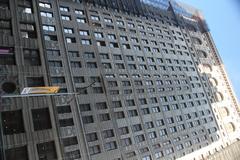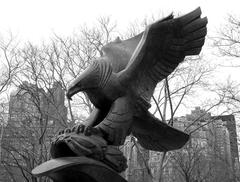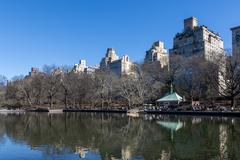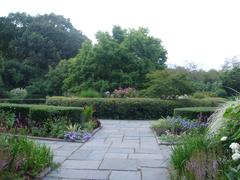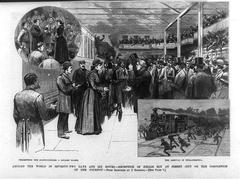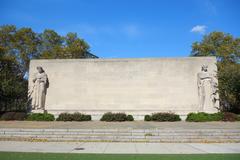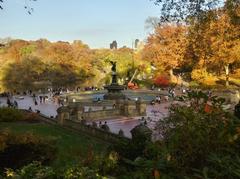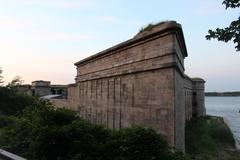
Guide to Visiting African Burial Ground National Monument in New York City
Date: 24/07/2024
Introduction
The African Burial Ground National Monument in Lower Manhattan, New York City, offers a profound glimpse into the lives of both free and enslaved Africans during the 17th and 18th centuries. Discovered in 1991 during the construction of a federal office building at 290 Broadway, the site unveiled the remains of over 400 individuals, making it one of the oldest and largest known African cemeteries in North America (National Park Service). This discovery has significantly altered the understanding of African American history in New York and the United States, providing invaluable insights into the cultural practices, traditions, and struggles of the African community in colonial New York. The site has since been designated a National Monument, ensuring its preservation and recognition for future generations. Visitors to the African Burial Ground National Monument can explore its rich history through guided tours, educational exhibits, and special events, making it a must-visit destination for those interested in understanding the broader context of African American heritage and history (New York Times).
Table of Contents
- Introduction
- Discovery and Excavation
- Historical Context
- Significance of the Site
- Archaeological Findings
- Commemoration and Memorialization
- Visitor Information
- Guided Tours and Special Events
- FAQ
- Conclusion
Discovery and Excavation
The burial ground was discovered in 1991 at 290 Broadway. The site spans approximately 6.6 acres and was used by both free and enslaved Africans from the 1690s until 1794, making it one of the oldest and largest known African cemeteries in North America. The excavation process was conducted with great care, revealing valuable insights into the lives of the African community in colonial New York (National Park Service).
Historical Context
During the 17th and 18th centuries, New York City was a hub of the transatlantic slave trade. Enslaved Africans worked as laborers, artisans, and domestic workers, contributing significantly to the city’s development despite facing harsh conditions and systemic discrimination. The burial ground served as a final resting place for many who endured these hardships (New York Times).
Significance of the Site
The African Burial Ground National Monument holds profound cultural and historical significance. It serves as a testament to the resilience and strength of the African community in early New York and provides valuable insights into their lives, traditions, and struggles. The site has sparked important conversations about race, history, and memory in the United States (National Park Service).
Archaeological Findings
The excavation revealed evidence of the physical toll of enslavement, including signs of malnutrition, physical trauma, and strenuous labor. Despite these hardships, the burials reflected cultural practices and traditions, such as the use of burial shrouds and personal items placed with the deceased (Smithsonian Magazine). The findings have been extensively studied, contributing to a broader recognition of African American heritage (New York Times).
Commemoration and Memorialization
The site features a granite monument with a spiral design, symbolizing the journey of the African diaspora, and a libation chamber for visitors to pay their respects. The interpretive center offers educational exhibits and programs, providing an opportunity to learn about the history of the burial ground and the broader context of African American history in New York City (National Park Service).
Visitor Information
Visiting Hours: The African Burial Ground National Monument is open to the public year-round. Specific visiting hours can be found on the official website.
Tickets: Admission is free. No tickets are required for entry.
Travel Tips: The monument is easily accessible by public transportation. Nearby attractions include the National September 11 Memorial & Museum and Wall Street.
Accessibility: The site is wheelchair accessible, and accommodations are available for visitors with disabilities.
Guided Tours and Special Events
Guided tours are available and provide an in-depth exploration of the burial ground’s history. The interpretive center hosts events and activities that promote awareness and understanding of the African Burial Ground’s significance. Check the official website for schedules and details.
FAQ
What are the visiting hours?
Visiting hours vary by season. Check the official website for current hours.
Is there an admission fee?
No, admission to the African Burial Ground National Monument is free.
Are guided tours available?
Yes, guided tours are available. Visit the official website for more information on tour schedules.
What other attractions are nearby?
Nearby attractions include the National September 11 Memorial & Museum, Wall Street, and the Statue of Liberty.
Conclusion
The African Burial Ground National Monument is a site of profound historical and cultural significance. Its discovery and preservation have shed light on the experiences of Africans in colonial New York, contributing to a broader understanding of African American history. The monument serves as a place of remembrance, education, and reflection, honoring the legacy of those buried at the site. Visitors can explore the memorial and interpretive center to gain a deeper understanding of this important historical site.
References
- National Park Service. (n.d.). African Burial Ground National Monument https://www.nps.gov/afbg/index.htm
- New York Times. (1993, October 8). African Burial Ground in Manhattan is Designated a Landmark https://www.nytimes.com/1993/10/08/nyregion/african-burial-ground-in-manhattan-is-designated-a-landmark.html
- Smithsonian Magazine. (n.d.). The Rediscovery of New York’s African Burial Ground https://www.smithsonianmag.com/history/the-rediscovery-of-new-yorks-african-burial-ground-4918761/

